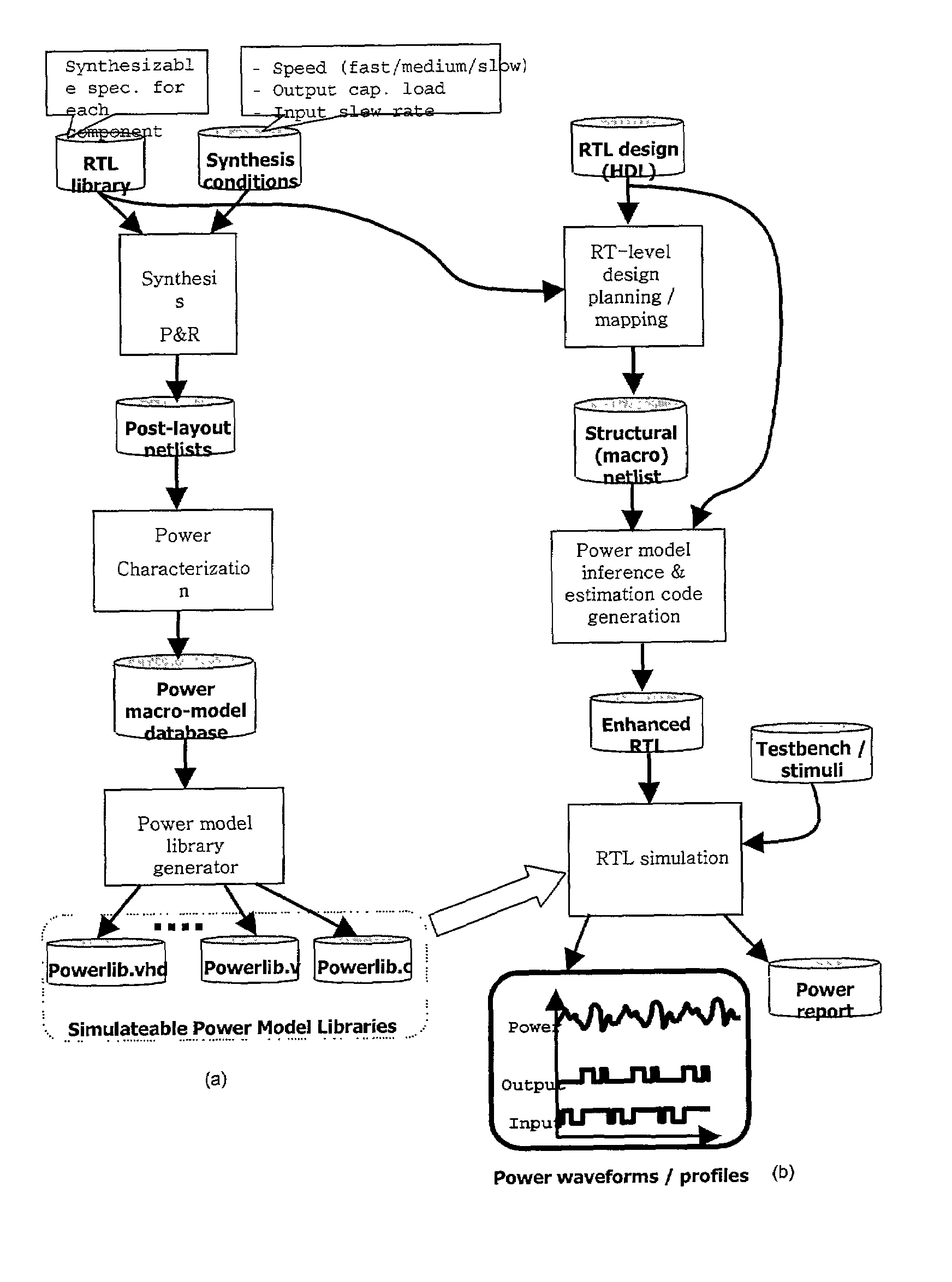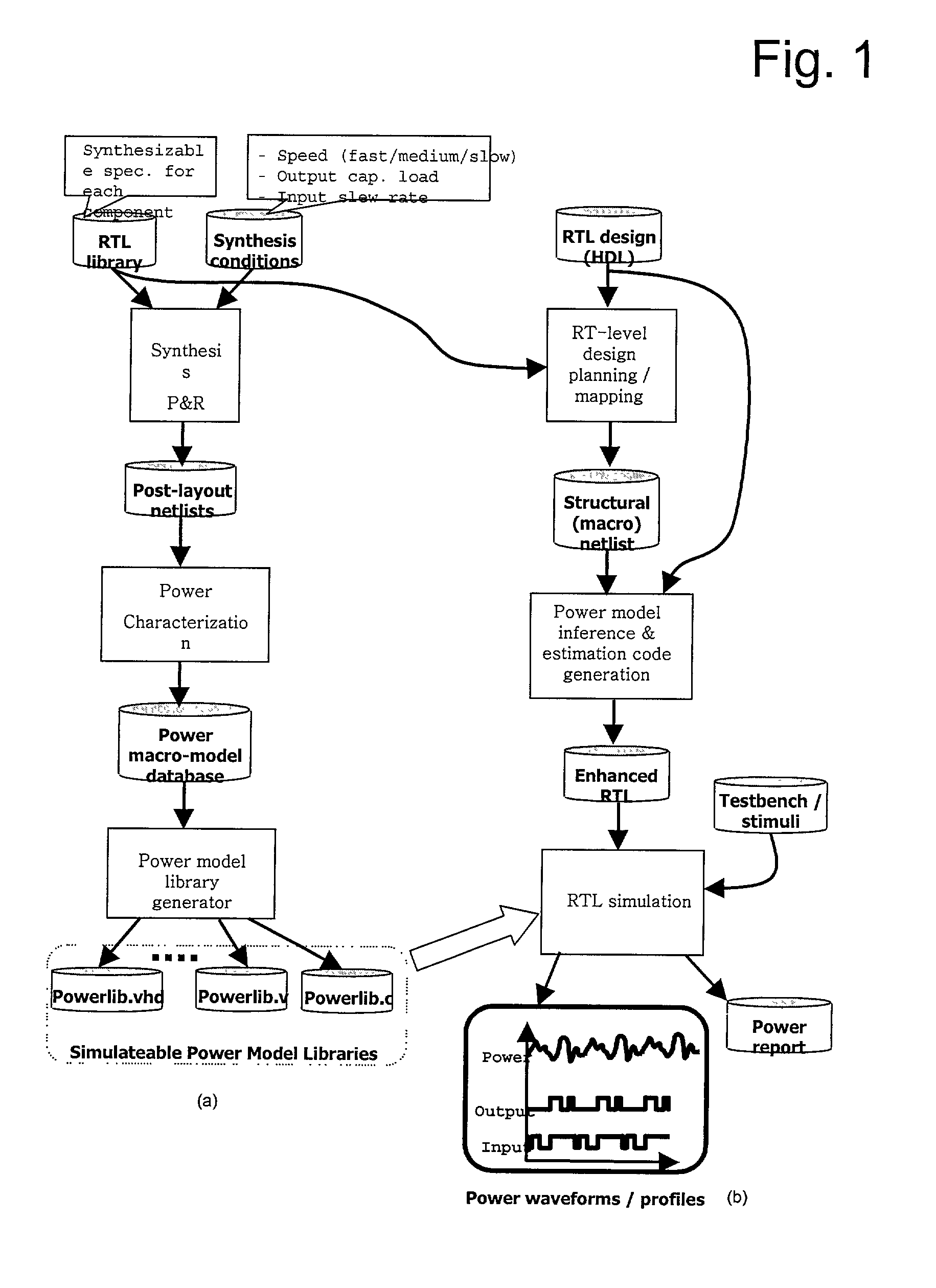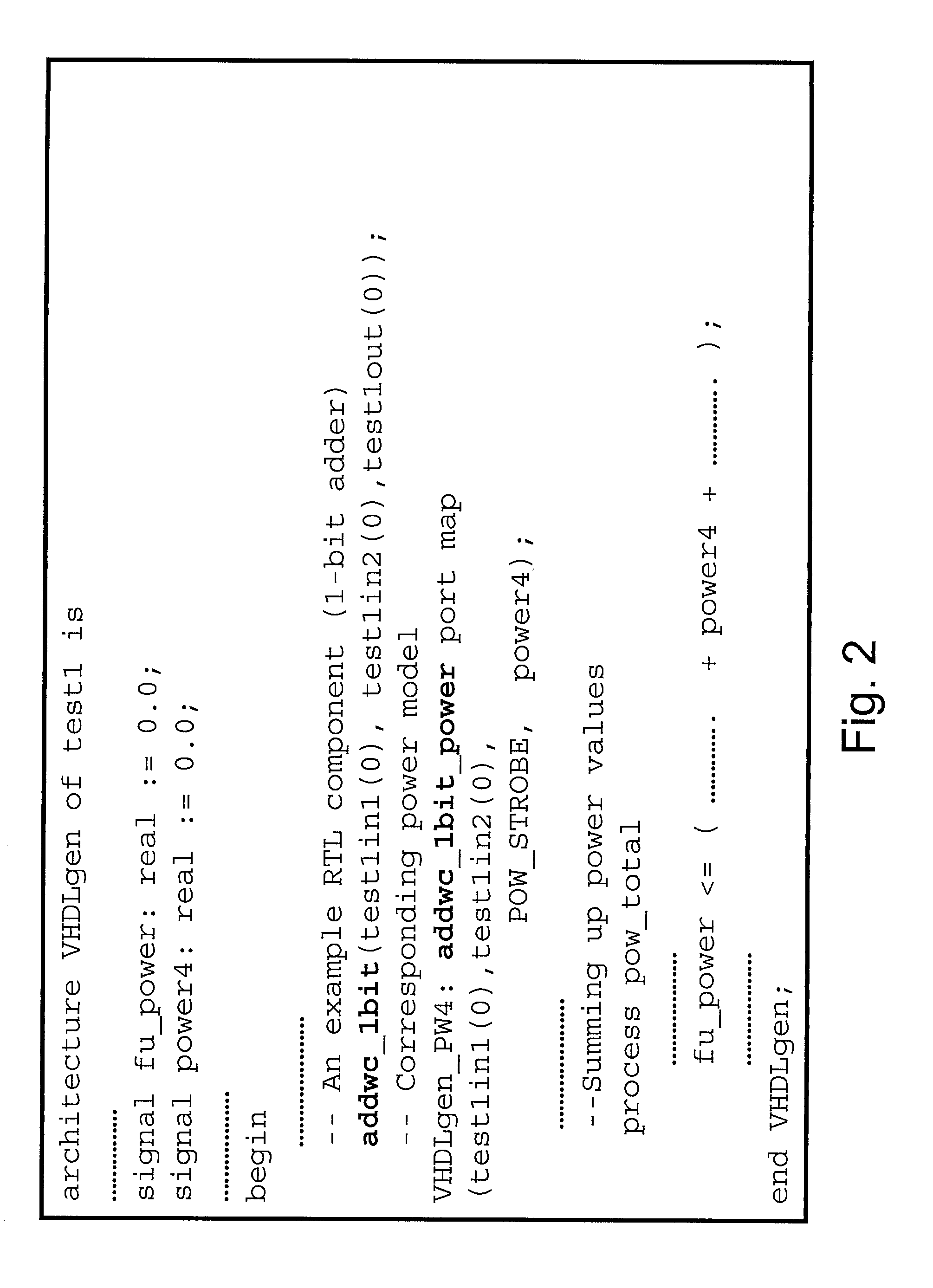Method and apparatus for efficient register-transfer level (RTL) power estimation
a technology of register transfer level and power estimation, applied in the direction of cad circuit design, program control, instruments, etc., can solve the problems of inability to address all the challenges, inability to complete the training sequence used to construct the macro-model, and inability to meet the requirements of efficiency considerations, etc., to achieve enhanced rtl description of the circuit, accelerated power estimation, and more friendly to simulators
- Summary
- Abstract
- Description
- Claims
- Application Information
AI Technical Summary
Benefits of technology
Problems solved by technology
Method used
Image
Examples
example 1
[0136]FIG. 2 gives the HDL description of a design test1, which has an RTL component addwc—1bit and the corresponding power model addwc—1bit_power instantiated in it. Module addwc—1bit has two inputs, test1in1(0) and test1in2(0), and one output, test1out(0). Both test1in1(0) and test1in2(0) form the inputs to the power model addwc—1bit_power. The other input to the power model is its activation signal POW_STROBE and the computed power consumption value power4.
[0137]The HDL code generated for the power model is shown in FIG. 3. The HDL description shows a single process which is sensitive to any event on the POW_STROBE signal. The first action of the process is to update the status of the queues that store the previous and current values of the inputs / outputs of addwc—1bit. This is followed by the actual evaluation of power consumption as a function of the bit-level transitions using the function trans_count. FIG. 4 gives an example specification of the function trans_count that simp...
example 2
[0146]Consider the basic power model addwc—1bit_power seen earlier in FIG. 3 When a falling edge event is seen on POW_STROBE, q_in1 and q_in2 first update the contents of the previous and current values. Then, the power consumption is computed as a function of q_in1 and q_in2.
[0147]Delayed computation can be applied to this power model and the modified VHDL specification for addwc—1bit_power is given in FIG. 7. Here, the store and compute operations of the power model are separated into two phases activated by separate strobing signals. The signal STORE_STROBE is applied every cycle to update the queues q_in1 and q_in2 (now of length k). The signal POW_STROBE is applied only in the kth cycle to evaluate power consumption. Note that function trans_count changes to accomodate k-long queues (see FIG. 8).
[0148]Note that the amount of additional storage required by the simulator to store component values is directly proportional to the size of the design and k. FIG. 9 shows the variation...
example 3
[0178]FIG. 13 lists the aggregate mean power (Σcomp∈ci{overscore (P)}comp), aggregate standard deviation (Σcomp∈ciScomp) and the number of RTL components (|Ci|) for the clusters C1, C2 and C3 shown in FIG. 12(b).
[0179]From this data, the objective function that is to be minimized is formulated (see Equations 4 and 6)
ΔP=constant*(0.59 / sqrt(N1)+51.5 / sqrt(N2)+2.24 / sqrt(N3)) (9)
[0180]If Ntot is 300,000 and nf is 10%, the allowed budget of samples is 30,000. Then, it follows from Equation 7 that the constraints for minimizing Equation 9 are
120.N1+256.N2+85.N3Ni>=1∀i=1 (10)
[0181]Minimizing Equation 9 subject to the constraints in Equation 10 yields N1=9, N2=104 and N3=27. Therefore, the desired sampling probabilities Pr1, Pr2 and Pr3 are 0.04, 0.89 and 0.11, respectively.
[0182]IV.C Systems for Power Estimation
[0183]The above discussed techniques are used to build systems for estimating power in electronic circuits described at the register-transfer level (RTL). A power estimation system...
PUM
 Login to View More
Login to View More Abstract
Description
Claims
Application Information
 Login to View More
Login to View More - R&D
- Intellectual Property
- Life Sciences
- Materials
- Tech Scout
- Unparalleled Data Quality
- Higher Quality Content
- 60% Fewer Hallucinations
Browse by: Latest US Patents, China's latest patents, Technical Efficacy Thesaurus, Application Domain, Technology Topic, Popular Technical Reports.
© 2025 PatSnap. All rights reserved.Legal|Privacy policy|Modern Slavery Act Transparency Statement|Sitemap|About US| Contact US: help@patsnap.com



